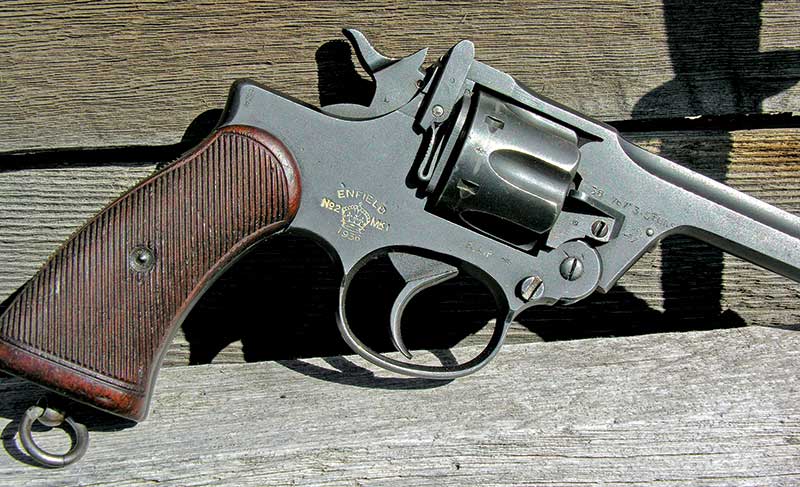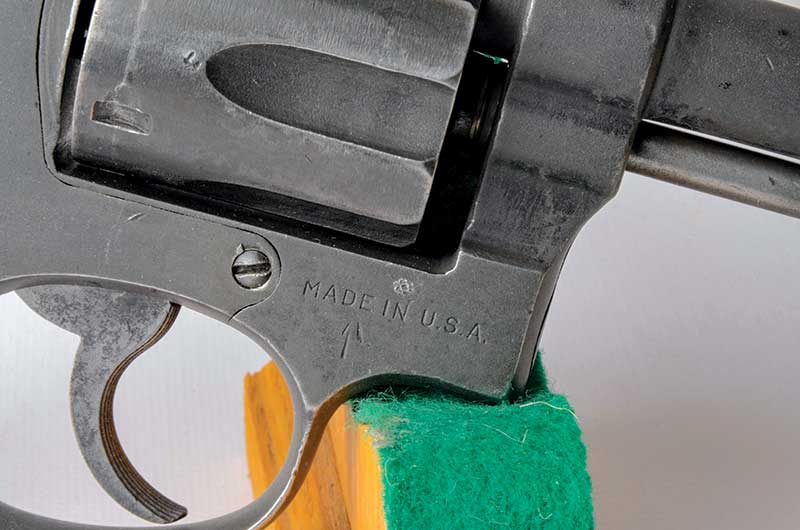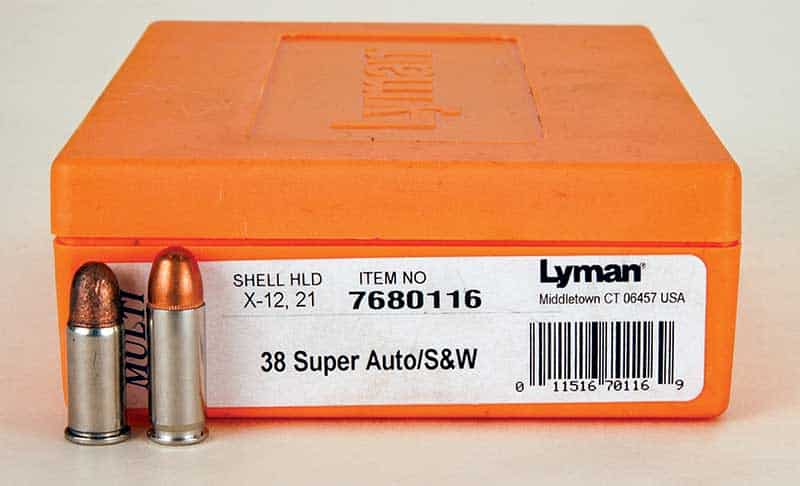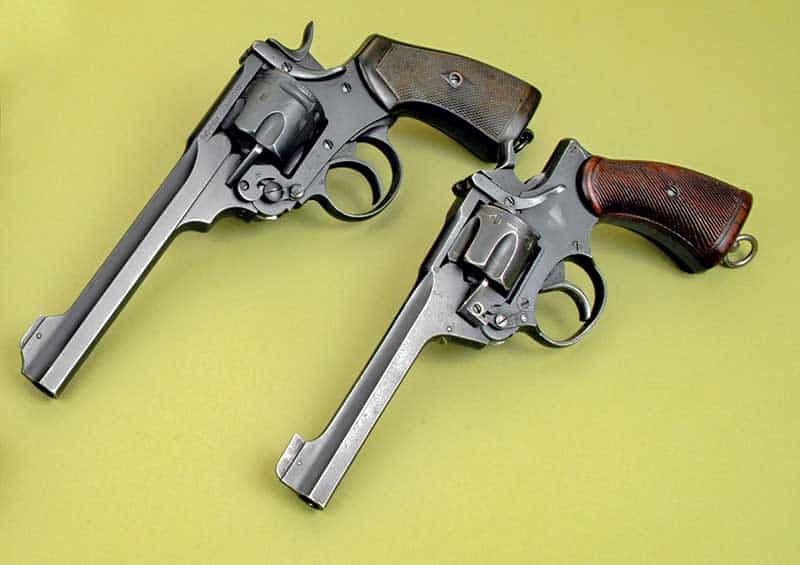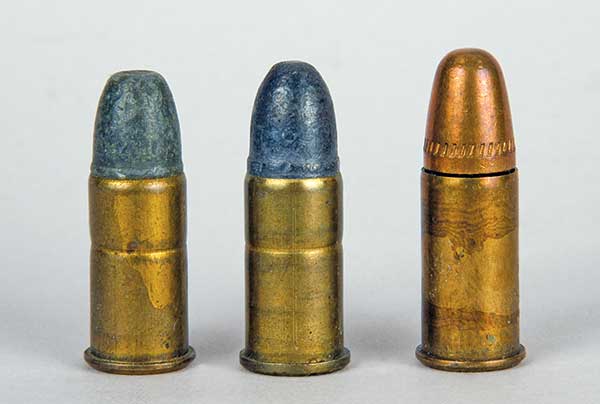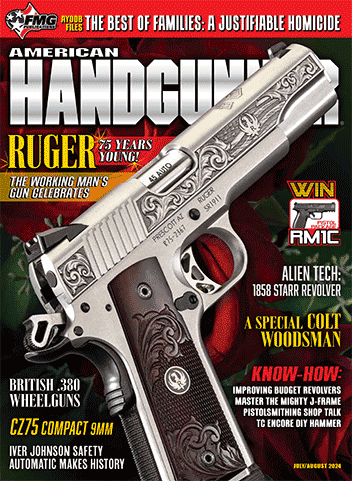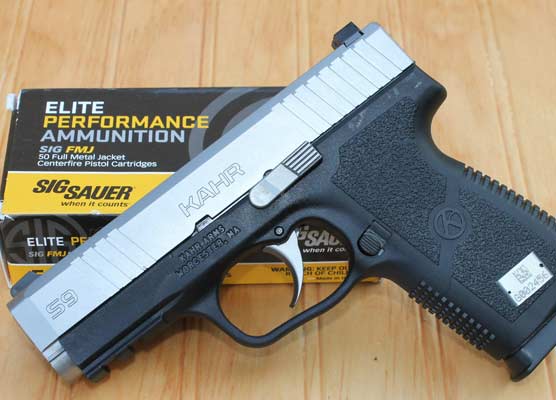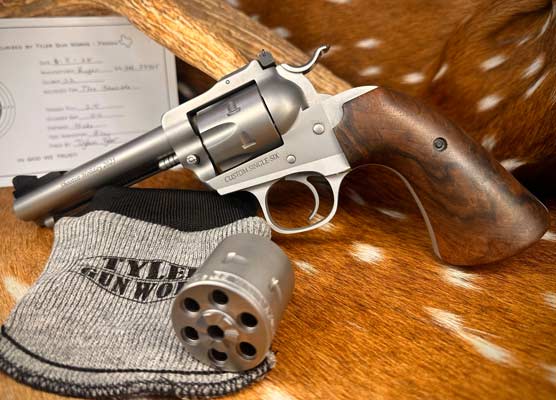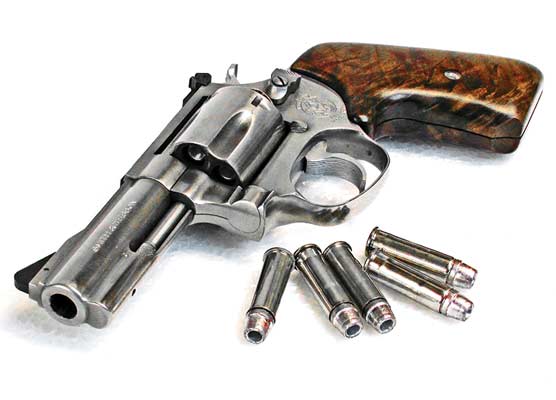Wheelgun Nation
The .380 British Revolvers
At a time when almost all modern nations’ military forces were adopting semi-auto handguns, the British stubbornly clung to revolvers. From 1887 to 1928, their standard service revolver cartridge had been .455 Webley, which made the transition from black powder to smokeless powder loadings. Last of the .455 revolvers was the 40-oz. Mark VI, which came into service in 1916, but by 1928, it was supplanted officially by the much smaller but likewise functioning Enfield No. 2 Mk 1. Due to firearms shortages, .455 revolvers actually served through World War II and beyond.
Enfield No. 2 Mk I
Introduced in 1928, the new 27-oz. Enfield No. 2 Mk I chambered a round named .380 British. This is a six-shot revolver with top-brake operation. To open it, a lever on the frame’s left side is pressed while the barrel is simultaneously pushed down. That ejects all empty or full cases from the chambers. New rounds are then inserted, and the barrel is brought up smartly to lock it in place. Enfield No. 2 Mk Is are capable of both single action and double action modes of fire, but a later Enfield No. 2 Mk I* without hammer spur is double action only. Ostensibly, this later version was intended for crew members of armored vehicles because hammer spurs tended to catch on protuberances in confined spaces.
Both versions of Enfield No. 2s are otherwise the same. The barrel length is 5″ and the finish is a dull blue. The barrel latch serves as a non-adjustable rear sight with a square notch milled into it. The front sight blade is removable, held by a single screw. Blades came in different heights so each revolver can be zeroed.
The actual configuration of the No. 2’s barrels is unique. Its sides are flat planes, the bottom is rounded and there is an integral full-length rib that ends in the stud into which sight blades are attached. Also odd to Americans is the barrel’s rifling has seven grooves. The twist is to the right. Having owned this handgun for nearly 20 years, I would have bet big bucks its grips were serrated wood, but with some reading, it was revealed they are actually serrated plastic. As befits a military handgun there is a lanyard ring in its grip bottom.
According to Military Small Arms of the 20th Century, 7th Edition by Ian V. Hoggs and John S. Weeks, the Enfield No. 2 Mk Is were recalled in 1938 and converted to No. 2 MK I*, i.e. double action only with spur-less hammer. Consequently, unaltered No. 2 MK Is are “exceptionally rare.” I admit to not having viewed many of these little revolvers, so I’m not sure of the veracity of this statement. What I do know is I found mine at a Montana gun show nearly 20 years ago. It has its hammer spur, functions single and double action and even better, it’s marked RAF (Royal Air Force). The above-mentioned book says these revolvers were made at the Enfield Royal Small Arms Factory and the Albion Motor Company. The Singer Sewing Machine Company (of England) manufactured parts. I cannot find data on how many were made, but they remained in British service until 1957. My sample is stamped Enfield Mk I, dated 1936 and has a 54XXX serial number.
M&P Victory
After buying my Enfield No. 2 Mk I, this thought occurred to me, “Duke, in for a dime in for a dollar.” That was my rationalization for hunting down the other British .380 World War II sixgun — S&W’s M&P “Victory” model. (Yvonne says I can rationalize anything if I try hard enough.)
Naturally, the British declared war on Germany in 1939 without having enough arms to fight a war, so once again, they turned to the United States. For handguns, that was S&W, which was already chambering for .38 S&W, happened to be the twin of their .380 British. More on that later. What they bought was simply S&W’s Military & Police model built on their K-Frame.
Between April 1940 and April 1942, they accepted S&W’s normal blued finish with 4″-, 5″- and 6″-barrel lengths. After that, only 5″ barrels were shipped and these were given the Parkerized (phosphate) finish standard on American military arms. Initially, the grips were checkered walnut, but the Parkerized ones were given smooth walnut grips. Weight is 34 oz.
As normal with S&W K-Frame M&Ps, sights were a groove down the frame’s top strap coupled with a half-moon blade front machined integral with the otherwise round barrel. The only difference between civilian M&Ps and those sent to the British was the latter ones had a lanyard ring in the grip bottom.
M&Ps operate with a side swing cylinder. Pushing a button on the frame’s left side releases the cylinder to swing out. An ejector rod is used to eject empty or loaded rounds. Mode of function is both single action or double action, and of course, there is a hammer spur. Rifling is five grooves with a right-hand twist. S&W sold the British over 560,000 M&Ps. Their serial numbers were inclusive with other K-Frame models but after April, 1942, a V was incorporated that gave them the nickname Victory Model.
Shooting & Loads
Shooting these two .38-200s is interesting. Single action trigger pull for the Enfield is 5 lbs. and the S&W’s is 7 lbs. Checkering on the latter’s hammer spur is so fine as to be useless, but the Enfield’s hammer spur checkering is coarse and easy to use. Both revolvers are sighted to hit close to the point of aim with my handloads carrying 200-grain bullets. I found the S&W’s double-action pull very heavy and hard to hit with. Conversely, the Enfield’s double-action pull is very short and easy to control. The problem is that neither revolver is going to hit anything very hard.
S&W devised their .38 S&W cartridge about 1877. It was first loaded with lead bullets of about 145 to 150 grains over about 15 grains of black powder. Interestingly, bullet diameter was 0.360″/0.361″ compared to the 0.357″/0.358″ of the later .38 Special. Consequently, .38 S&W rounds will not (should not) enter .38 Special chambers. Case length is 0.775″ compared to the .38 Special’s 1.16″ length. Originally, .38 S&W was intended for S&W’s line of small top-break revolvers. In the 20th century, a .38 S&W factory loading with 200-grain bullets was labeled “Super Police.” Their velocity was barely 600 fps.
This was the loading British ordnance officers copied to develop their .38-200. However, they ran into a legal glitch. According to the Hague Accords on warfare, lead bullets are proscribed as inhumane. Therefore, the British lessened bullet weight to 178 grains with an FMJ nose and lead core. In order to prevent bullets from sticking in barrels at such low velocities, the actual bullet-bearing surface was still lead.
Lyman’s bullet #358430 is cataloged at 200 grains, and my handloads of 1.8 grains Bullseye give 612 fps from the Enfield and 630 fps from the S&W. Brass is available from Starline. I was surprised by the Lyman dies I acquired for reloading. They were labeled for .38 S&W and .38 Super, and I have experience successfully loading both cartridges with them. I was able to find a box of Winchester .38 S&W factory loads with 145-grain bullets. They clocked at 637 fps from the Enfield and a whopping 690 fps from my S&W. For fun, I put a surplus U.S. steel helmet on a post and hit it from about 20 yards. Bullets just made lead splashes and a tiny dent. Conversely, when hit with a 230-grain FMJ bullet from 1911, the helmet jumped off the post and rolled about 30 feet. The side hit was caved in. I find myself liking the Enfield better due to its lighter weight, good balance and action smoothness. If it were a bit more powerful, it would make a nice carry revolver.
Back in 2001, a scene in the movie Pearl Harbor made me laugh out loud. A British Spitfire was shot down over water, and the pilot fired his Enfield No. 2 Mk I to bust the canopy so he could escape. I expect, in reality, a .38-200-grain bullet at 600 fps would bounce off the canopy and ricochet about the cockpit.


